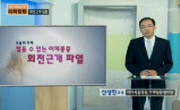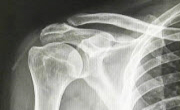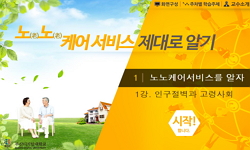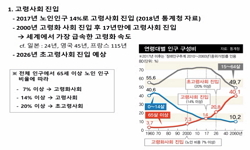목적: 중ㆍ장년층에서 견관절 탈구 후 발생한 회전근 개 파열의 임상양상을 분석하고, 수술적 치료의 결과를 알아보고자 한다. 대상 및 방법: 2004년 10월에서 2008년 10월까지 견관절 탈구와 ...
http://chineseinput.net/에서 pinyin(병음)방식으로 중국어를 변환할 수 있습니다.
변환된 중국어를 복사하여 사용하시면 됩니다.
- 中文 을 입력하시려면 zhongwen을 입력하시고 space를누르시면됩니다.
- 北京 을 입력하시려면 beijing을 입력하시고 space를 누르시면 됩니다.
https://www.riss.kr/link?id=A99571413
- 저자
- 발행기관
- 학술지명
- 권호사항
-
발행연도
2010
-
작성언어
Korean
- 주제어
-
KDC
514
-
등재정보
KCI등재
-
자료형태
학술저널
- 발행기관 URL
-
수록면
20-26(7쪽)
-
KCI 피인용횟수
1
- 제공처
-
0
상세조회 -
0
다운로드
부가정보
국문 초록 (Abstract)
목적: 중ㆍ장년층에서 견관절 탈구 후 발생한 회전근 개 파열의 임상양상을 분석하고, 수술적 치료의 결과를 알아보고자 한다.
대상 및 방법: 2004년 10월에서 2008년 10월까지 견관절 탈구와 회전근 개 파열이 동반되어 수술적 치료를 시행한 50세 이상의 환자 19명을 대상으로 하였다. 남자 7명과 여자 12명으로, 평균 나이는 64.7세 (50~78세)였고, 추시 기간은 평균 22개월 (8~56개월) 이었다. 탈구의 횟수, 회전근 개 파열의 크기, 견관절 내 Bankart 병변, 수술까지의 시간 등을 조사하였고, 수술 전, 후의 ASES 점수, UCLA점수, SST 점수 및 운동범위를 측정하여 수술 후의 임상결과 및 결과에 미치는 인자를 알아 보고자 하였다.
결과: ASES 점수는 술 전 30.2점 (±20.7)에서 술 후 72.3점 (±20.3)으로, UCLA shoulder rating scale은 12.9점 (±5.2)에서 26.5점 (±7.0)으로. SST 점수는 2.4점 (±3.3)에서 7.3점(±4.2)으로 향상되었다. 운동 범위는 술 전 전방 거상, 외전, 외회전 및 내회전이 각각 110.8도 (±39.3), 107.7도 (±40), 22.5도 (±17.6)와 L5 수준에서 술 후 전방 거상, 외전, 외회전 및 내회전이 각각 153.6도 (±20.6), 152.1도 (±20.8), 36.4도 (±22.7)와 L1 수준으로 통계학적으로 의미 있게 향상되었다. 나이와 Bankart 병변의 유무, 탈구 횟수는 수술 후의 결과와 관련이 없는 것으로 관찰 되었다. 그러나 파열이 클 수록 임상결과는 좋지 않았고, 수상 후 수술까지의 기간과 술 후 UCLA 점수와 술 후 SST 점수가 통계학적인 의미가 있는 것으로 관찰되었다 (p=0.039, 0.038).
결론: 중ㆍ장년 이후에 견관절 탈구 발생시 조기에 회전근 개 파열에 대한 검사가 필요할 것으로 생각된다. 또한 회전근 개 파열이 동반된 경우, 조기에 회전근 개 봉합을 시행하는 것이 더 좋은 결과를 얻을 수 있다.
다국어 초록 (Multilingual Abstract)
Purpose: To evaluate clinical features and surgical results for rotator cuff tear secondary to shoulder dislocation in middle-aged and elderly patients. Materials and Methods: We reviewed 19 patients over 50 years of age who had rotator cuff tears ...
Purpose: To evaluate clinical features and surgical results for rotator cuff tear secondary to shoulder dislocation in middle-aged and elderly patients.
Materials and Methods: We reviewed 19 patients over 50 years of age who had rotator cuff tears combined with shoulder dislocation between October 2004 and October 2008. There were 7 males and 12 females with a mean age 64.7 years (range, 50 to 78 years). The average follow-up duration was 22 months (range, 8 to 56 months). We investigated the number of dislocations, the size of the cuff tear, the presence of Bankart lesions and the time interval from dislocation to surgery. We also investigated the ASES score, UCLA score, SST score, and shoulder range of motion before and after surgery. We analyzed clinical outcomes and contributing factors.
Results: ASES scores improved from 30.2 preoperatively to 72.3 postoperatively; UCLA scores improved from 12.9 to 26.5; SST scores improved from 2.4 to 7.3. Range of motion improved significantly: forward flexion, abduction, external rotation and internal rotation were, respectively, 110.8(±39.3)°, 107.7(±40)°, 22.5(±17.6)° and L5 level preoperatively; postoperatively they were 153.6(±20.6)°, 152.1(±20.8)°, 36.4(±22.7)° and L1 level. Age, the presence of Bankart lesions and the number of dislocations were not correlated with clinical outcomes. But the size of the cuff tear was correlated with clinical results. Also, the duration from dislocation to surgery was correlated with postoperative UCLA and SST scores (p=0.039, p=0.038).
Conclusion: For shoulder dislocation, it is important to achieve early diagnoses of rotator cuff tears in middle-aged and elderly patients. If these injuries are both present, early rotator cuff repair should be performed for better clinical results.
참고문헌 (Reference)
1 Sonnabend DH, "Treatment of primary anterior shoulder dislocation in patients older than 40 years of age. Conservative versus operative" 304 : 74-77, 1994
2 Hsu HC, "Tendon- Defect and muscle-unloaded models for relating a rotator cuff tear to glenohumeral stability" 18 : 952-958, 2000
3 Wirth MA, "Subluxations and dislocations about the glenohumeral joint. In: Rockwood and Green’s fractures in adults. 5th ed" Lipposcott Williams & Wilkins 1189-1195, 2001
4 Voigt C, "Shoulder instability and rotator cuff tear" 38 : 70-74, 2009
5 Porcellini G, "Shoulder instability and related rotator cuff tears: arthroscopic findings and treatment in patients aged 40 to 60 years" 22 : 270-276, 2006
6 Itoi E, "Rotator cuff tears in anterior dislocation of the shoulder" 16 : 240-244, 1992
7 Pevny T, "Primary traumatic anterior shoulder dislocation in patients 40 years of age and older" 14 : 289-294, 1998
8 Berbig R, "Primary anterior shoulder dislocation and rotator cuff tears" 8 : 220-225, 1999
9 Lee GW, "Primary Traumatic Anterior Shoulder Dislocation in the Middle-aged and Elderly Patients" 3 : 75-78, 2000
10 Simank HG, "Incidence of rotator cuff tears in shoulder dislocations and results of therapy in older patients" 126 : 235-240, 2006
1 Sonnabend DH, "Treatment of primary anterior shoulder dislocation in patients older than 40 years of age. Conservative versus operative" 304 : 74-77, 1994
2 Hsu HC, "Tendon- Defect and muscle-unloaded models for relating a rotator cuff tear to glenohumeral stability" 18 : 952-958, 2000
3 Wirth MA, "Subluxations and dislocations about the glenohumeral joint. In: Rockwood and Green’s fractures in adults. 5th ed" Lipposcott Williams & Wilkins 1189-1195, 2001
4 Voigt C, "Shoulder instability and rotator cuff tear" 38 : 70-74, 2009
5 Porcellini G, "Shoulder instability and related rotator cuff tears: arthroscopic findings and treatment in patients aged 40 to 60 years" 22 : 270-276, 2006
6 Itoi E, "Rotator cuff tears in anterior dislocation of the shoulder" 16 : 240-244, 1992
7 Pevny T, "Primary traumatic anterior shoulder dislocation in patients 40 years of age and older" 14 : 289-294, 1998
8 Berbig R, "Primary anterior shoulder dislocation and rotator cuff tears" 8 : 220-225, 1999
9 Lee GW, "Primary Traumatic Anterior Shoulder Dislocation in the Middle-aged and Elderly Patients" 3 : 75-78, 2000
10 Simank HG, "Incidence of rotator cuff tears in shoulder dislocations and results of therapy in older patients" 126 : 235-240, 2006
11 Toolanen G, "Early complications after anterior dislocation of the shoulder in patients over 40 years. An ultrasonographic and electromyographic study" 64 : 549-552, 1993
12 Itoi E, "Dynamic anterior stabilizers of the shoulder with the arm in abduction" 76 : 834-836, 1994
13 Neer CS II, "Cuff-tear arthropathy" 65 : 1232-1244, 1983
14 Neviaser RJ, "Concurrent rupture of the rotator cuff and anterior dislocation of the shoulder in the older patient" 70 : 1308-1311, 1988
15 Ribbans WJ, "Computerised arthrotomography of primary anterior dislocation of the shoulder" 72 : 181-185, 1990
16 Wheeler JH, "Arthroscopic versus non-operative treatment of acute shoulder dislocations in young athletes" 5 : 213-217, 1989
17 Gumina S, "Anterior dislocation of the shoulder in elderly patients" 79 : 540-543, 1997
18 Neviaser RJ, "Anterior dislocation of the shoulder and rotator cuff rupture" 103-106, 1993
19 Kim DY, "Anterior Shoulder Dislocation with Massive Rotator Cuff tear and Axillary Nerve Injury - 4 Cases Report" 7 : 98-102, 2004
동일학술지(권/호) 다른 논문
-
상완골 간부 골절에서의 전향적 교합성 골수강내 금속정 고정술
- 대한견주관절의학회
- 조철현(Chul-Hyun Cho)
- 2010
- KCI등재
-
간섭나사를 이용한 흉근하 상완 이두근 건 고정술의 단기 추시 결과
- 대한견주관절의학회
- 김정우(Jeong Woo Kim)
- 2010
- KCI등재
-
- 대한견주관절의학회
- 현윤석(Yoon-Suk Hyun)
- 2010
- KCI등재
-
- 대한견주관절의학회
- 차승도(Seung-Do Cha)
- 2010
- KCI등재
분석정보
인용정보 인용지수 설명보기
학술지 이력
| 연월일 | 이력구분 | 이력상세 | 등재구분 |
|---|---|---|---|
| 2027 | 평가예정 | 재인증평가 신청대상 (재인증) | |
| 2021-01-01 | 평가 | 등재학술지 유지 (재인증) |  |
| 2018-01-01 | 평가 | 등재학술지 유지 (등재유지) |  |
| 2015-01-01 | 평가 | 등재학술지 유지 (등재유지) |  |
| 2011-08-04 | 학술지명변경 | 외국어명 : Journal of Korean Shoulder and Elow Society -> Clinics in Shoulder and Elbow |  |
| 2011-01-01 | 평가 | 등재학술지 선정 (등재후보2차) |  |
| 2010-01-01 | 평가 | 등재후보 1차 PASS (등재후보1차) |  |
| 2008-01-01 | 평가 | 등재후보학술지 선정 (신규평가) |  |
학술지 인용정보
| 기준연도 | WOS-KCI 통합IF(2년) | KCIF(2년) | KCIF(3년) |
|---|---|---|---|
| 2016 | 0.04 | 0.04 | 0.07 |
| KCIF(4년) | KCIF(5년) | 중심성지수(3년) | 즉시성지수 |
| 0.06 | 0.07 | 0.255 | 0.02 |




 ScienceON
ScienceON DBpia
DBpia






